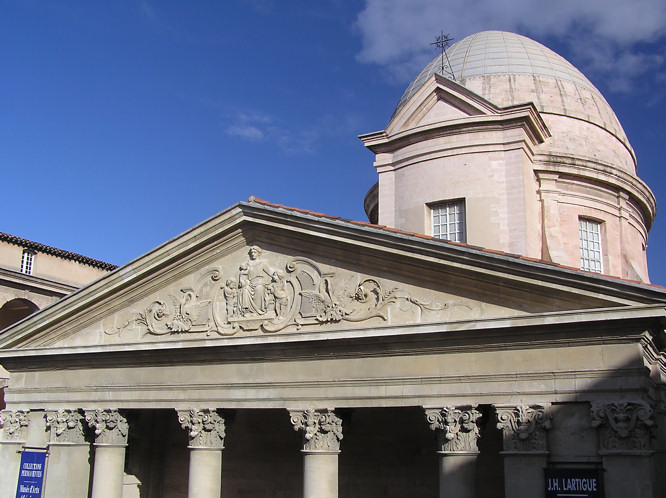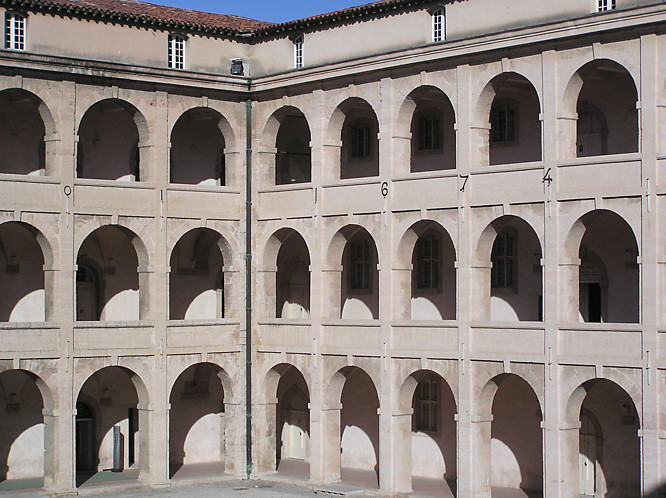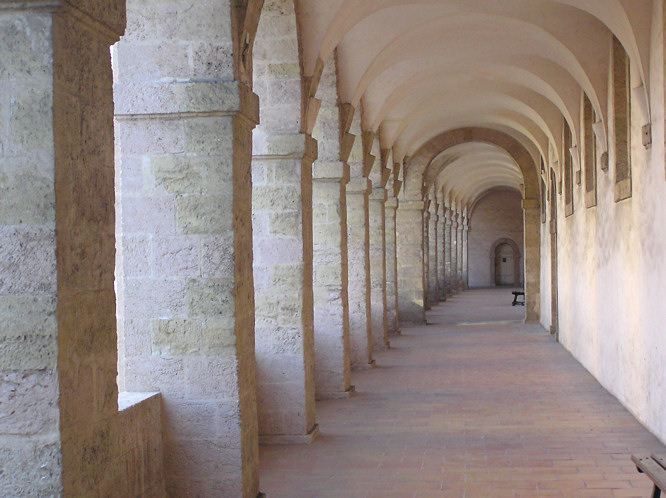The Old Charity Museum in Marseille
Apart from the old harbour the La Vieille Charite Museum is the other place I would highly recommend you visit. It is an attractive, fascinating architectural ensemble consisting of a Pantheon like church in the middle surrounded by 3 a story high building that has arched covered walk ways facing the court yard.

The construction plan for La Vieille Charite although conceived in 1640 by the Marseille Town Council, was slow in taking shape and the first stone was not laid until 1671. It was to be one of Pierre Puget's most successful architectural achievements but was not, however, completed until 1749.
It was built to house homeless, sick and old people in compliance with the Royal policy of 'enclosing the poor'. Some received training to find a job. Later it became a hospice. Now it is a cultural center, housing different museums like the museum of Mediterranean archeology, the museum of African, Amerindian and Oceania art.
You can walk around the court yard for free. Some of the exhibits make a small charge from time to time. You will find La Vieille Charite between the following roads: Rue de l'Observance, Rue de la Vielle Tour and Rue de Trigance
La Vieille Charite is constructed out of the local pink and white stones from the quarries of 'La Couronne'. The building is composed of 4 wings that over look the interior rectangular courtyard like a cloister in a monastery. In the center of the courtyard is a Baroque style domed chapel. The wings are 3 floored galleries that provide shade in the heat of the summer and protection from the winter rain. It was classified as historic monument in 1951 and has been recently restored.

The chapel in the centre of the courtyard was built between 1679 and 1707 and it proved to be the most remarkable piece of architecture that Pierre Puget was ever to create for his home town. This chapel with its egg-shaped dome is a perfect example of pure Italian baroque. The present facade was not built in the 17th Century but dates from 1863. It depicts Charity taking in pauper children; this group is flanked by two pelicans feeding their young.
After the Revolution, and until the end of the 19th Century, the Vieille Charite was used as a hospice for old people and children. In 1905 the building was occupied by the army and later became a shelter for the destitute. After the Second World War the architect Le Corbusier was struck by the building and called attention to its abandoned state. It had been scheduled for demolition but finally became a National Heritage building in 1951.
The Malraux laws resulted in the beginning of remarkable restoration work on the Vieille Charite in 1968. Since 1986 the building has fulfilled a variety of scientific and cultural functions, housing museums and hosting temporary exhibitions. The Vieille Charite is in the heart of the Panier and is a must for every tourist visiting Marseille.

The Place des Moulins - Windmill Square
Just south of the La Vieille Charite you will find Windmill Square or the Place des Moulins. It lies at the highest point in the Panier overlooking the surrounding old town. This upper part of the town was used to defend Marseille against sea and land attacks. Canons were fired at enemy ships (which were normally flying the British Royal Ensign flag)
As it is an exposed spot, for many years the square was occupied by windmills whose sails were easily rotated by the wind. In 1596, fifteen windmills could be seen, giving Marseille its characteristic appearance. The use of water power to drive machinery gradually took over from the windmills. This eventually caused them to close down. In the 19th Century only three windmills were still operating and their stone bases can still be seen today.
In the middle of the 19th Century the city authorities ordered the buildings to be demolished in order to create a new square with all the buildings constructed in a more or less identical architectural style. The new Place des Moulins included trees, benches, an area for playing French bowls and, later, a school that gave it a more village-like atmosphere. In 1840 water tanks were built under the square to supply the city with water. A local organisation set up to promote the interests of the Panier is presently studying the possibility of opening a museum based around 'The History of Water in Marseille'.
Travel books

